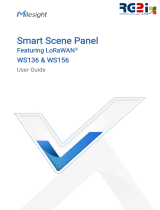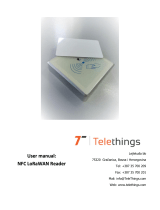
Contents
1. Product Introduction ......................................................................................................................... 5
1.1 Overview ...................................................................................................................................5
1.2 Features ................................................................................................................................... 5
2. Hardware Introduction ...................................................................................................................... 5
2.1 Packing List ..............................................................................................................................5
2.2 Hardware Overview ................................................................................................................. 6
2.3 LED Patterns ............................................................................................................................ 6
2.4 Dimensions .............................................................................................................................. 6
3. Power Supply .....................................................................................................................................6
4. Operation Guide .................................................................................................................................7
4.1 NFC Configuration ...................................................................................................................7
4.2 LoRaWAN Settings .................................................................................................................. 8
4.3 Basic Settings ........................................................................................................................ 10
4.4 Advanced Settings ................................................................................................................ 11
4.4.1 Calibration Settings .................................................................................................... 11
4.4.2 Threshold Settings ..................................................................................................... 11
4.5 Maintenance .......................................................................................................................... 12
4.5.1 Upgrade ....................................................................................................................... 12
4.5.2 Backup .........................................................................................................................12
4.5.3 Reset to Factory Default .............................................................................................13
5. Installation ....................................................................................................................................... 14
6. Device Payload ................................................................................................................................ 15
6.1 Basic Information .................................................................................................................. 15
6.2 Sensor Data ........................................................................................................................... 16
6.3 Downlink Commands ............................................................................................................ 17
Appendix .............................................................................................................................................. 18
Sound Level Guidelines ............................................................................................................... 18




















